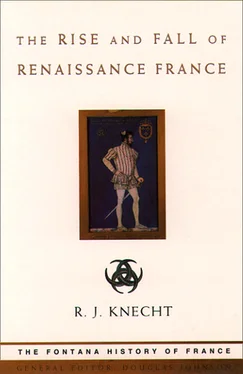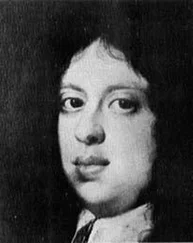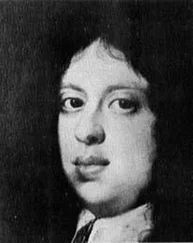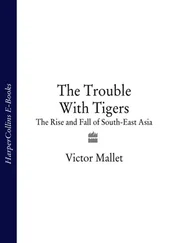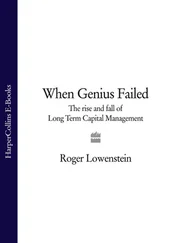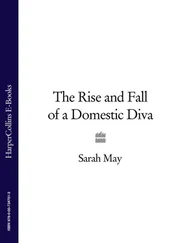The recession of plague, war and famine served to stimulate a recovery of France’s population after 1450. In the absence of a general census for this period it is impossible to give precise figures. We have to rely on evidence supplied by a relatively few parish registers, mainly relating to Provence and the north-west, which are often in poor condition, do not provide complete baptismal lists, seldom record burials and mention marriages only occasionally. But certain general conclusions may be drawn. It is unlikely that France’s population exceeded 15 million around 1500, but it was growing. Having been reduced by half between 1330 and 1450, it seems to have doubled between 1450 and 1560. In other words, the numerical effects of the Black Death and Hundred Years War were largely made up in the century after 1450. The rise was by no means uniform across the kingdom: some villages, even regions, maintained a high annual growth rate over a long period, while others made more modest advances.
The need to feed more mouths stimulated agricultural production after 1450. This was achieved by means of land clearance and reclamation rather than by improved farming techniques. The reconstruction began in earnest about 1470 and lasted till about 1540. The initiative rested with individual seigneurs, who had to overcome enormous obstacles. On countless estates nothing was visible except ‘thorns, thickets and other encumbrances’; the old boundaries had vanished and people no longer knew where their patrimonies lay. The compilation of new censiers and terriers was costly and time-consuming. Labour was also in short supply to begin with, forcing lords to offer substantial concessions to attract settlers on their lands.
Reclamation, like the resettlement of the countryside, was subject to many regional variations. It began sooner in the Paris region and the south-west than in the Midi, where it took up almost the entire first quarter of the sixteenth century. Pastoral farming was often damaged in the process, as many village communities, anxious to maximize their arable production, tried to restrict grazing. Peasants were forbidden to own more than a specified number of animals, but the need for manure precluded a complete ban on livestock. In mountain areas, where arable farming was less important, steps were taken to protect pastures from excessive land-clearance.
The rise of France’s population after 1450 was reflected in urban growth. Although evidence for this is often selective (like tax returns) or incomplete, all of it points upwards. Thus at Périgueux the population rose gently between 1450 and 1480, then steeply, reaching a peak in 1490. Using the base index of 100 for the number of known families, this had fallen to 29 in 1450, before rising to 87 in 1490 and levelling off at 79 in 1500. Paris, which was by far the largest town in France, had some 200,000 inhabitants by 1500. A document of 1538 distributing the cost of 20,000 infantry among the cities in accordance with their ability to pay enables us to rank them in order of size. Below Paris were four towns (Rouen, Lyon, Toulouse and Orléans) of between 40,000 and 70,000 inhabitants, then perhaps a score of towns of between 10,000 and 30,000 inhabitants, then another forty or so of between 5000 and 10,000. Finally there were many more small towns with fewer than 5000 inhabitants. The line distinguishing a small town from a large village was often difficult to draw. A town was usually walled. It also possessed certain privileges and comprised a wider variety of occupational and social types than a village.
The character of a town was determined by its main activity. Trade was important to all of them, but some were also administrative, intellectual and ecclesiastical centres. Seven had parlements; about 90 were capitals of bailliages and sénéchaussées , 15 (Paris, Toulouse, Montpellier, Orléans, Cahors, Angers, Aix, Poitiers, Valence, Caen, Nantes, Bourges, Bordeaux, Angoulême and Issoire) had universities, and about 110 were archiepiscopal or episcopal sees. Virtually the only industrial towns were Amiens, where the making of cloth kept half the population employed, and Tours, where silk was important.
By 1500 the walled towns, commonly described as ‘good towns’ ( bonnes villes ) to distinguish them from the large villages or villes champêtres , were active politically. In 1482, King Louis XI asked the people of Amiens to endorse a treaty, giving as his reason ‘the need to secure the consent and ratification of the men of the estates and communities of the bonnes villes of our kingdom’. The towns have been described as a fourth power in the kingdom along with the king, the church and the nobility. The crown and the towns worked together as allies, while watching each other closely.
The walls of many towns had fallen into disrepair by the thirteenth century and, consequently, many had been taken by the English during the Hundred Years War. To protect themselves, many towns by 1500 had repaired their walls at their own cost and the process continued in the sixteenth century. In order to qualify as a bonne ville a town needed not only a curtain wall, but also human and material resources with which to defend itself. In the words of Claude de Seyssel, writing in 1510: ‘a bonne ville or place forte that is well supplied, well equipped with guns and with all things necessary to sustain a siege and nourish a garrison and relief force is the safeguard of an entire kingdom.’ A recent survey has traced the remains of 1700 places-fortes in France dating from before 1500.
The topography of Paris was determined by the River Seine, which divided it into three parts: the Cité on the island in the middle of the river; the Ville on the right bank and the Université on the left bank. The city was encircled by medieval walls, but only the left bank remained within the wall built in the twelfth century by King Philip Augustus. The right bank had outstripped it long ago, and was now hemmed in by a fourteenth-century wall. Beyond the walls lay suburbs or faubourgs , the most important having grown around the abbey of Saint-Germain-des-Prés. The area within the walls was small and densely built up, the inhabitants crammed into narrow houses of two or three storeys. All the streets, except a few axial ones, were narrow and virtually impassable to wheeled traffic. They also stank because of the ordure that was thrown into them. Among the few open spaces were the Cemetery of the Innocents and the Place de Grève, both on the right bank. Two bridges linked the Ville to the Cité : the Pont-au-Change, a wooden bridge built in 1296 which was lined with shops owned by goldsmiths, jewellers and money-changers, and the Pont Notre-Dame, which collapsed in 1499 and was rebuilt. Two bridges linked the Cité to the left bank – the Petit Pont and Pont Saint-Michel. In addition to being a thriving business community, the Cité was also a judicial and ecclesiastical centre. At the eastern end of the island stood the cathedral of Notre-Dame. Close by were the fortified bishop’s palace and a gated close of 37 canons’ houses. At the opposite end of the island stood the Palais or old royal palace, now occupied by the parlement, which was the highest court of law, and other sovereign courts. Its business attracted a vast number of councillors, barristers, procurators, solicitors, ushers and so on, in addition to the many litigants and people who came to shop at the stalls set up by tradesmen within the palace. Also on the island was the Hôtel-Dieu, the city’s main hospital.
The Ville was the business quarter of Paris. It comprised the markets of the Halles, expensive shops in the rue Saint-Denis and mixed commerce around the rue Saint-Martin. Many streets were organized by trades. The Place de Grève, in addition to being a port, was the place where the militia assembled and the site of civic ceremonies and public executions. On the square’s east side stood the Maison aux Piliers, the seat of the municipal government or Bureau de la Ville. Other important secular buildings in the Ville were the Louvre, a medieval fortress with a tall central keep, and the Châtelet, seat of the prévôt of Paris and his staff. The palace of the Tournelles was the only royal residence within the capital that was still used by the king and his court.
Читать дальше
